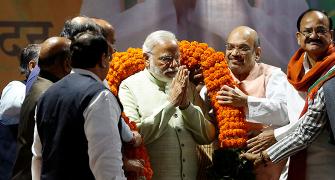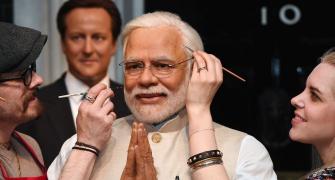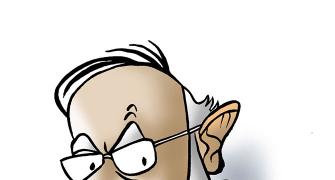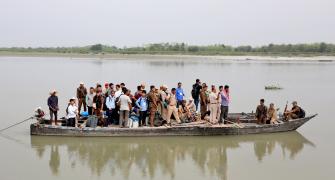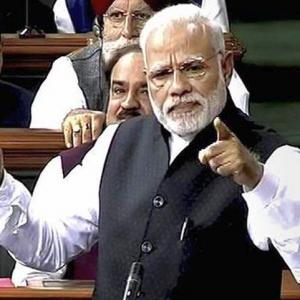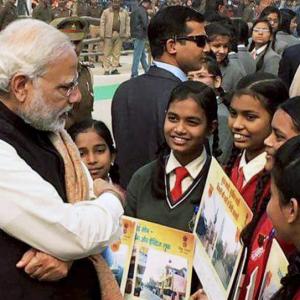Prime Minister Narendra Modi has five key aspects to his style of leading -- total command over bureaucracy, direct approval on every decision, flexible approach to issues, importance of communication and adept at repackaging schemes, says A K Bhattacharya.
Illustration: Dominic Xavier/Rediff.com.

This month, Narendra Modi completes three years as India’s prime minister. It is a long enough period for anyone to get a sense of his leadership style. What is clear by now is that Mr Modi is completely different from his predecessor, Manmohan Singh, and indeed almost all his predecessors.
Indira Gandhi, who served as prime minister for almost 15 years in two different stints, is perhaps the only one whose operational style is a little closer to that of Mr Modi. Both were strong leaders. Both had a connect with the ordinary people of India. And both understood power and authority -- and knew how to use them.
Mr Modi, however, is different in many ways. Here are five key aspects of Mr Modi’s leadership style. Some of these may be similar to those of Indira Gandhi, but they acquire a new dimension and colour under Mr Modi.
One, Mr Modi’s command over the bureaucracy is total. He entered the Prime Minister’s Office as a complete outsider, but took very little time to understand how he needs to take charge of the bureaucracy. Disintermediation was his primary instrument to keep civil servants under control. In sharp contrast to his immediate predecessor, Mr Modi made sure that he had a role and the final say in deciding on the appointment of senior civil servants in all important ministries. Thus, many central ministers realised that their top bureaucrats also had a direct connect with the prime minister and the PMO.
In line with this strategy, Modi developed a relationship of accountability with top civil servants across the central ministries. Periodic meetings were held with top secretaries in different ministries where the prime minister would be directly briefed on the progress of policy actions decided upon by the government. Yes, the ministers concerned would often be there in such meetings, but every bureaucrat present there would know who the boss was and whose writ ran at the end of the day.
Even when the issues to be decided pertained to the Budget, the architecture of the goods and services tax or demonetisation, the prime minister made sure that he had a direct involvement with the bureaucrats concerned and played a role in the formulation of policies or their execution. This was again completely different from the way Manmohan Singh ran the government for 10 years, when he would operate through the PMO officials, through the central ministers or through file notes.
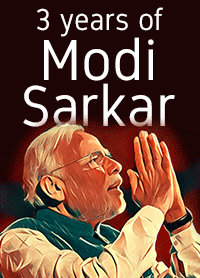
The second distinct style of Modi is reflected in the way he runs the government and takes decisions. The joke doing the rounds during the P V Narasimha Rao government’s tenure was that it had only one-and-a-half reformers, suggesting that very few ministers were reform-minded in their approach then. Under Modi, it cannot be said that there are only one-and-a-half reformers in his government. But certainly it can be stated that every decision of the Modi government flows from Mr Modi and has his direct or indirect approval.
Thus, the decision on the broad contours of the coal auction system would be taken at a meeting with Mr Modi taking the lead. Even a decision on whether an experts’ committee’s report should be made public or not is taken by the prime minister or his office. Cabinet meetings also reflect the predominance of Mr Modi as the central leader, who runs the government with an iron hand, brooking little opposition or dissent from any of his ministerial colleagues. For instance, there was reportedly little discussion at the Cabinet meeting where Mr Modi announced the government’s plan on demonetisation. Even the decision on amending the motor vehicle rules to abolish the use of red beacons on cars used by VIPs was first taken by the prime minister and then shared at the Cabinet meeting for its endorsement.
Three, Mr Modi’s leadership style distinguishes itself for its flexible approach to issues. He had launched his government in May 2014 with the focus on promoting development, creating jobs and eliminating black money. In the first two years, he had sensed that the development agenda would be a long-term goal, job creation would be extremely difficult in the current economic scenario and the black money challenge would have to be met with some quick high-profile action.
Not surprisingly, Mr Modi’s speeches no longer talk about jobs, the policy focus is on creating infrastructure with the target of many development goals being set at 2022, much after the next general elections, and a big-bang decision on demonetising 86 per cent of the currency in the system was taken in the name of attacking black money. And when there were some internal doubts if demonetisation would indeed be able to tackle black money, a new objective of a move towards digitised payments was set. This is quick thinking to change course if there are early signs of failure.
Four, the prime minister has understood the importance of communication unlike most of his predecessors. But what he prefers is not a two-way exchange of views but a one-way communication. Thus, there are no press conferences by Modi where he could be asked questions. Instead, he prefers the social media platforms to bombard the media with all that he wants to say or what the government may have achieved. This presumably suits him as dissent is something that he or his government is not particularly fond of.
Finally, Modi has become adept at repackaging existing schemes and putting all his might behind promoting them so aggressively that he kills two birds with one stone. One, he ensures that the repackaged schemes and projects are implemented as efficiently and effectively as possible.
And two, he is seen to be owning these schemes as their key proponent so much so that it is closely identified with him and most people do not always remember that those schemes were actually mooted and started by his predecessor government. There are at least four such schemes -- a scheme for promoting energy-efficient light emitting diode bulbs, he rural job guarantee programme, the biometric-based Aadhaar identity scheme and a scheme for low-cost bank accounts for the poor.
These then constitute Modi’s Panchatantra or the five principles that influence his leadership style. It can be argued that his leadership style is subject to influence of many other principles. But these five principles could well be the starting point of assessing Modi’s leadership style.
Read all our Narendra Modi specials in the links below...


